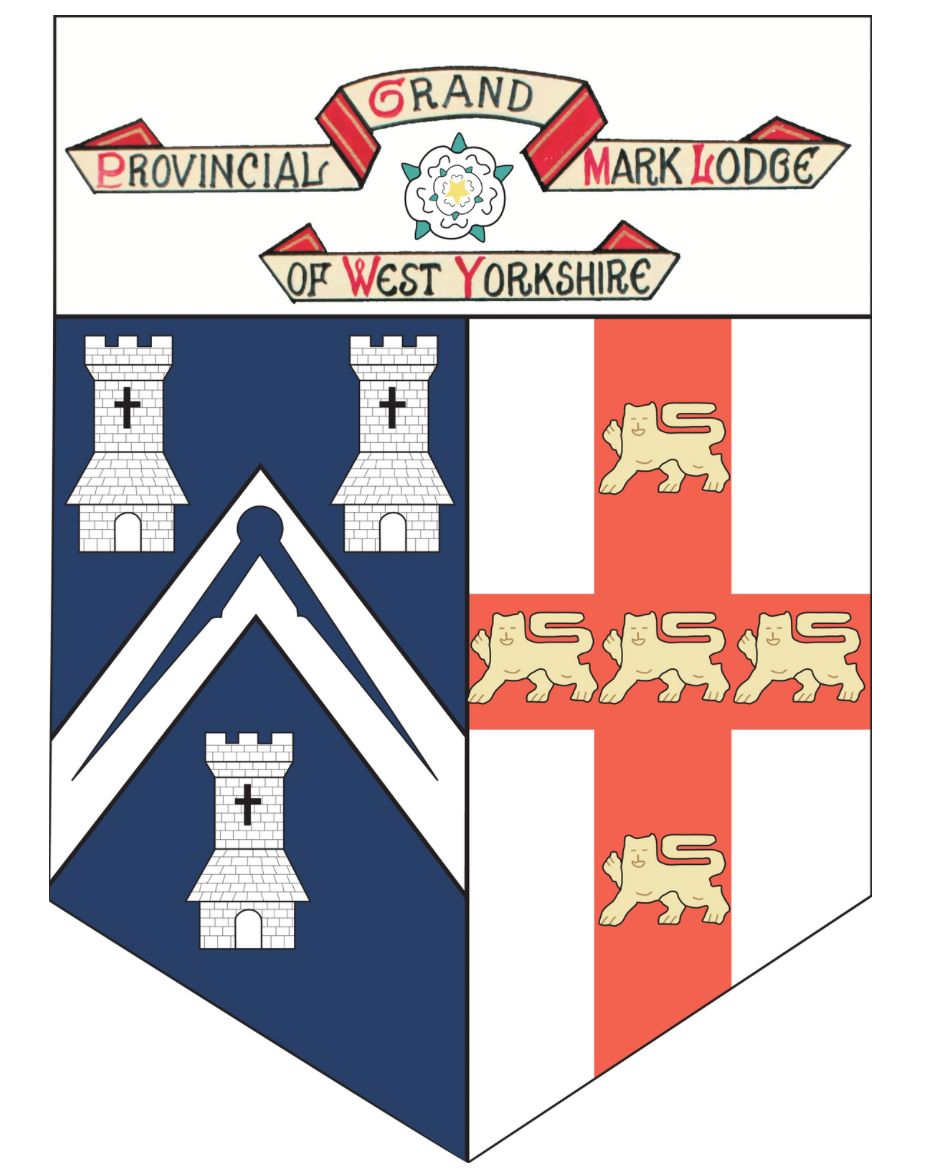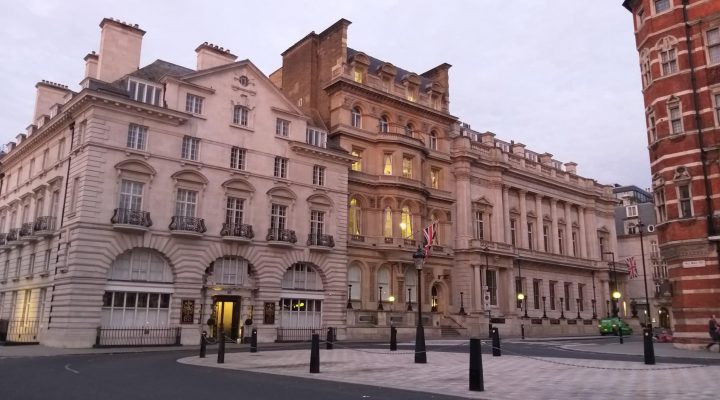The Order built on the traditions of centuries
Since the beginning of time, where man has built with stone, Masons have marked their work. An early example of this can be seen at Masada on stone taken 2000 years ago from the quarries at Jerusalem.
Here, Masons engraved their personal marks as signatures and as an indication of the position of each stone relative to the next. Masons’ Marks can be seen on buildings throughout the world and offer a fascinating insight to the progress of civilisation throughout the ages.
In Speculative Masonry, possibly the earliest documented reference to ‘the Mark’ can be found in the Schaw Statutes of 1598: “no Master or Fellow-of-Craft is to be received or admitted except in the presence of six Masters and two Entered Apprentices,…. the date thereof being orderly booked and his name and Mark inserted in the said book.”
In Yorkshire, it is claimed that Mark Masonry has been practised since ‘Time Immemorial’, being worked in Craft Lodges and consisting of two ceremonies, or Degrees. The first came after the Fellowcraft Degree where the candidate was ‘made’ a Mark Man, and the second after the Master Mason’s Degree when he was advanced to the Degree of Mark Master Mason.
To this day, the Mark is considered to be the completion of the Fellowcraft degree and in a number of countries – Scotland and Ireland in particular -the Mark is still taken in Craft Lodges as an integral part of the Second Degree.
In England, Mark Masons established their own Grand Mark Lodge in 1856 and the two Mark ceremonies were combined into one. Since then it has been conferred, not in Craft Lodges, but in Mark Lodges consecrated for that purpose.
Mark Grand Lodge
In 1856 Lord Leigh was installed as the first Grand Master and the Order became a fundamental part of Freemasonry in its own right. In the ensuing years, Grand Lodge granted Warrants to a rapidly growing number of Mark Lodges throughout the land as enthusiasm for the Order gathered momentum.
Today there are 41 Provinces in England and Wales, as well as 25 Districts throughout the world, with a total of 1500 Lodges under the jurisdiction of The Grand Lodge of Mark Master Masons of England and Wales and its Districts and Lodges Overseas of which H.R.H. Prince Michael of Kent is the Grand Master.
The Order is governed The General Board from Mark Masons’ Hall in St. James’ Street very near to St. James’ Palace – in London. Grand Lodge meets four times each year when Mark Masons can attend to see the wonderful ceremonial and enjoy the unique atmosphere of Masonry at its best.Grand
Provincial Grand Lodge of West Yorkshire
In the years following the formation of Grand Lodge it became apparent that administration of the rapidly growing Order would be greatly improved creating Provincial Grand Lodges to advise and assist Lodges closer to home.
Subsequently the Provincial Grand Lodge of West Yorkshire was formed in 1871 and has continued to prosper to this day – now comprising 44 Mark and 22 Royal Ark Mariner Lodges – approximately 1200 members.
Geographically the Province stretches from the Lancashire border, eastwards to Goole, and from Ripon southwards to the Derbyshire border.
The Province is ruled the Provincial Grand Master, his Deputy and Assistant. The highlight of the Provincial year is the Annual Meeting in April where Provincial appointments and promotions are made. All these are awarded on merit, and consideration is given to brethren four years after their installation into the Chair. On rare occasions a brother who has not attained the Chair, but who has made an outstanding contribution to his Lodge, or the Order, may also be considered for a Provincial appointment.
The Provincial Grand Master also occasionally presents a Sterling Silver “Provincial Grand Master’s Award” to brethren who have given outstanding service to the Order.
The Symbolism of the Mark
Mark Masonry is one of the “Higher Degrees” in Freemasonry and the beautiful and moving ceremony of a candidate being ‘advanced’ into the Order centres around the powerful symbolism of the Keystone and, in particular, a verse from Psalm 118;
“The stone which the builders rejected has become the head of the corner.”
The ritual explores the building of King Solomon’s Temple and, like all other Masonic Orders, the teaching of the Mark greatly adds to the high moral standards promoted brethren in everyday modern life.
Who can join Mark Masonry
A prospective candidate must have been a Master Mason for at least four weeks to enable him to be proposed, seconded and balloted to join a Mark Lodge.
The ceremony of advancement involves the Master Mason first being ‘made’ a Mark Man, then a Mark Master Mason. He is given his own unique Mark, which may be used in the attendance book and in correspondence with a brother Mark Mason, and then invested with a distinctive apron and breast jewel.
The new Mark Master Mason can, if he wishes, progress through the various offices – similar to those in a Craft Lodge but with the addition of three further offices of Junior, Senior and Master Overseer – which will eventually lead to him being installed as Master of the Lodge.
Commitment
Mark Lodges meet between 3 and 7 times per year, with most meeting on 4 to 6 occasions in a year. All have a practice night before the regular meeting and a festive board after it. The expectations for a newly advanced brother include regular attendance and a commitment to the attractive and straightforward ritual of the Order.
Mark Masonry Socially
Mark Lodges in this Province are renowned for their enthusiasm in actively arranging a variety of social events involving the brethren, their ladies and families. These are, like visiting other Mark Lodges, an integral and important aspect of the Order and socially it is usual for a Mark Lodge to organise Ladies’ evenings, after-Lodges, Sunday lunches, trips, garden parties and much more, with something for everyone throughout the year.
In addition, Provincial Grand Lodge prides itself on arranging events which include annual golf tournaments, inter-Provincial cricket matches, family fetes, trips to Grand Lodge and an annual family carol service.
With beautiful and meaningful ritual in the Lodge room and a thriving social scene outside, it is little wonder that Mark Masonry is referred to as the friendly Order and is so popular in West Yorkshire.
Mark Masonry and Freemasonry
In his book “The Mark Degree” Bernard Springett comments; “The Mark Degree is self-sufficient and would remain so if the other Masonic Degrees did not exist. Combined with Ark Mariner it gives a complete experience of one Creation….”
However, it must be stressed that the Order does not compete with others in Freemasonry and realises the immense importance of existing and working in close harmony with all other Masonic orders.
Rather than diminishing a brother’s dedication to Freemasonry, it is now widely acknowledged that membership of the “Higher Degrees” fosters a deeper commitment and a greater appreciation for all aspects of Masonry. The Mark is justifiably proud in enjoying excellent relationships with all Masonic Degrees and thrives on this mutually successful co-existence.
Freemasonry has something to offer everyone. Whilst some brethren are content to remain a member of just one Lodge, there are others who desire more knowledge and are not happy in ‘just belonging’. All the appendant Orders fulfil the requirement and are made ever, more attractive to the busy schedule of the modern-day Mason their frequency of meetings and easily affordable fees.
Just as a candidate for the Mark must be a Craft Master Mason, being a Mark Master Mason is an essential qualification if a brother wishes to extend his Masonic knowledge still further joining other Orders, such as:
– The Ancient and Honourable Fraternity of Royal Ark Mariners
– The Allied Masonic Degrees
– The Royal and Select Masters
– The Operatives
To discover the Magic of the Mark for yourself use the where we meet page HERE to find a lodge and then use the membership enquiry form to register your interest.

